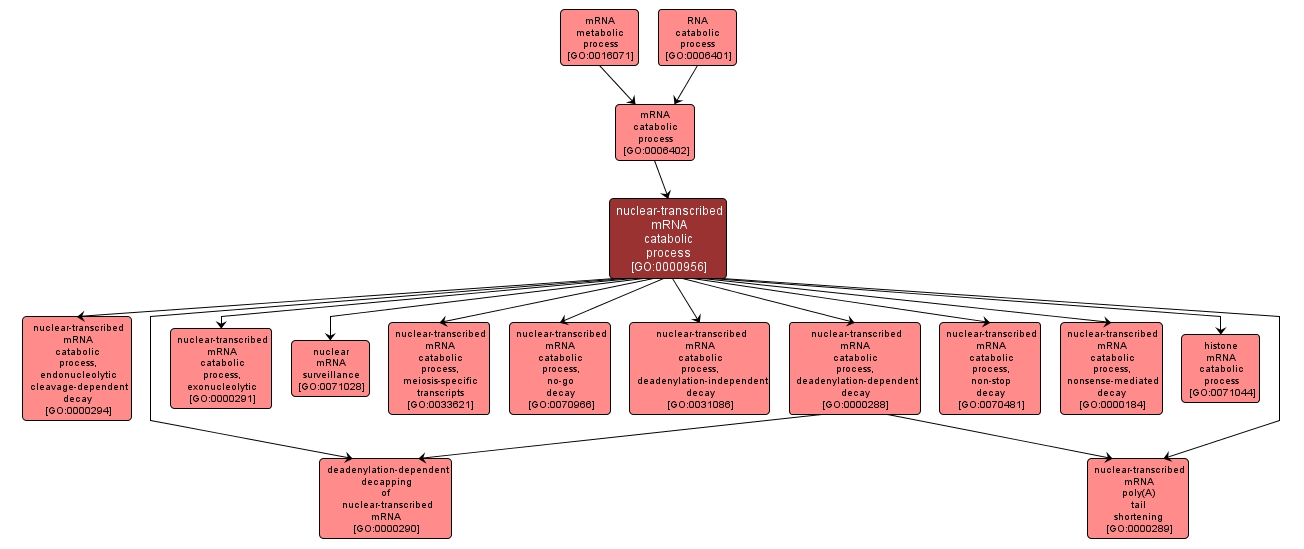GO TERM SUMMARY
|
| Name: |
nuclear-transcribed mRNA catabolic process |
| Acc: |
GO:0000956 |
| Aspect: |
Biological Process |
| Desc: |
The chemical reactions and pathways resulting in the breakdown of nuclear-transcribed mRNAs in eukaryotic cells. |
Synonyms:
- nuclear mRNA breakdown
- nuclear mRNA degradation
- nuclear mRNA catabolism
|
|

|
INTERACTIVE GO GRAPH
|














